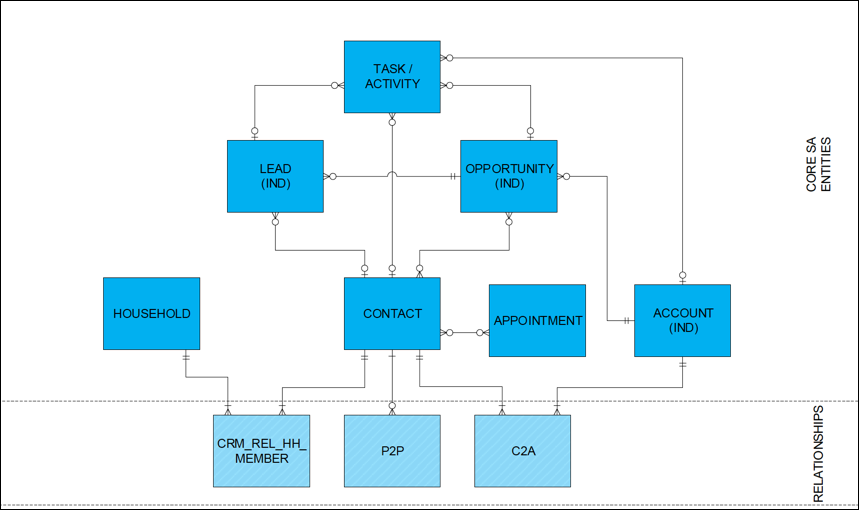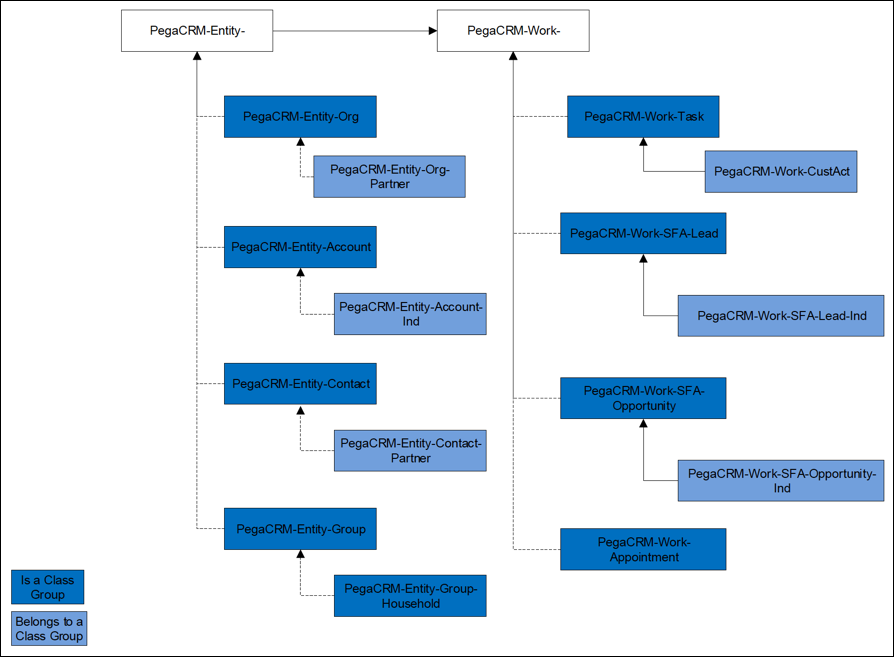Pega Sales Automation data model
The Pega Sales Automation data model consists of a set of standard business objects that support the sales process. The business objects have unique attributes, for example, account numbers, contact names, or operator IDs, and they interact with other business objects as they move through the sales life cycle.
Pega Sales Automation includes the following business objects:
- Account
- Activity
- Appointment
- Contact
- Household
- Lead
- Opportunity
- Organization
- Task
Business objects depend on the selling mode that you select for your implementation. In Pega Sales Automation, you can use the following selling modes:
- Business-to-business (B2B) – if you are selling products and services to other businesses.
- Business-to-consumer (B2C) – if you are selling products and services directly to individual consumers.
- Mixed mode – if you are selling products to both individual consumers and to other businesses.



Viewing the data model
You can use the Pega Sales Automation data model to see a graphical presentation of all of the case types and data classes in your application. This visualization of the relationships between the entities can help you to understand all of the dependencies between the elements of Pega Sales Automation,and decide how to customize your application.
- To view the data model, in the navigation pane of App Studio, click next to the Data model header.
- To view the dependencies visualization as shown in the figure below, in the
left list view, click an object. For example, Household.
A circle with one line indicates a page property. A circle with three lines indicates a page list property.
Household view in the data model 
- To expanded your view with page list properties, on the graphic, click an
object. For example, Business Opportunity.
Business opportunity view in the data model 
- To view a list of relevant records, in the header of Dev Studio, click . Properties that are defined as relevant records can be inherited. For more information, see Managing relevant records and components.
Previous topic Adopting the Pega Cosmos design system Next topic Pega Sales Automation API
